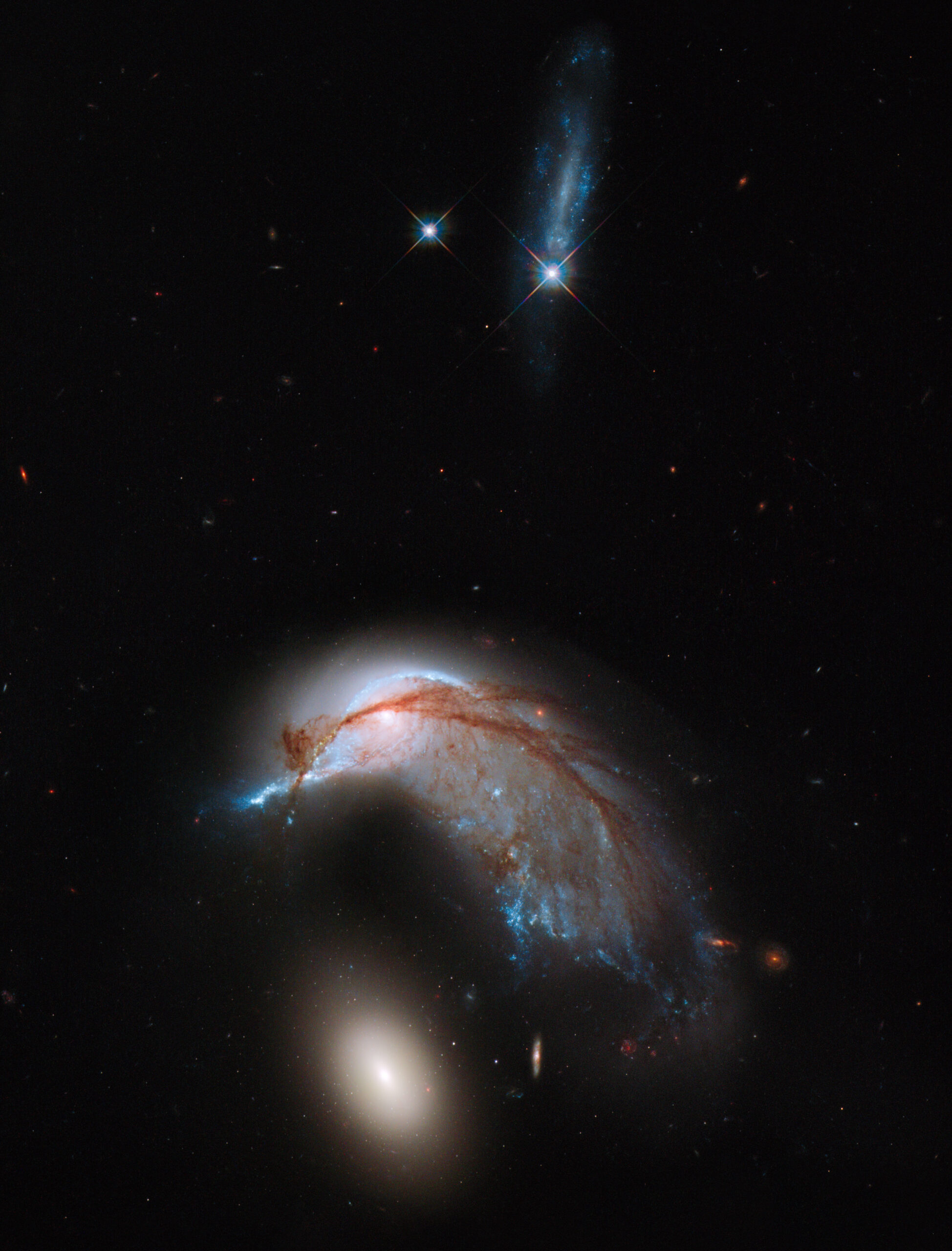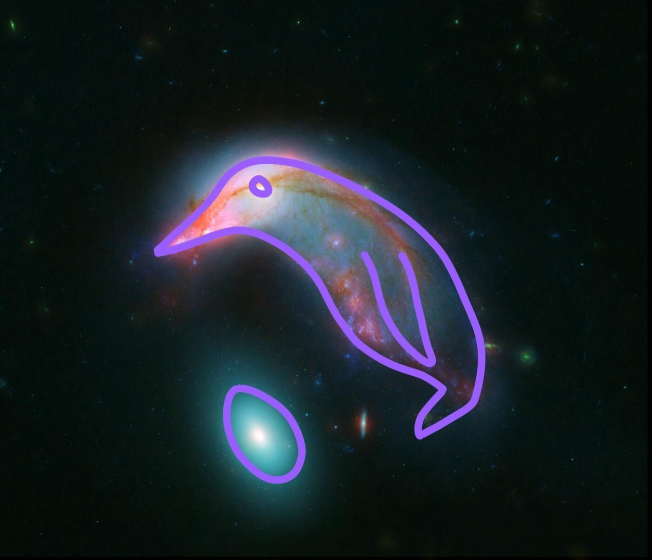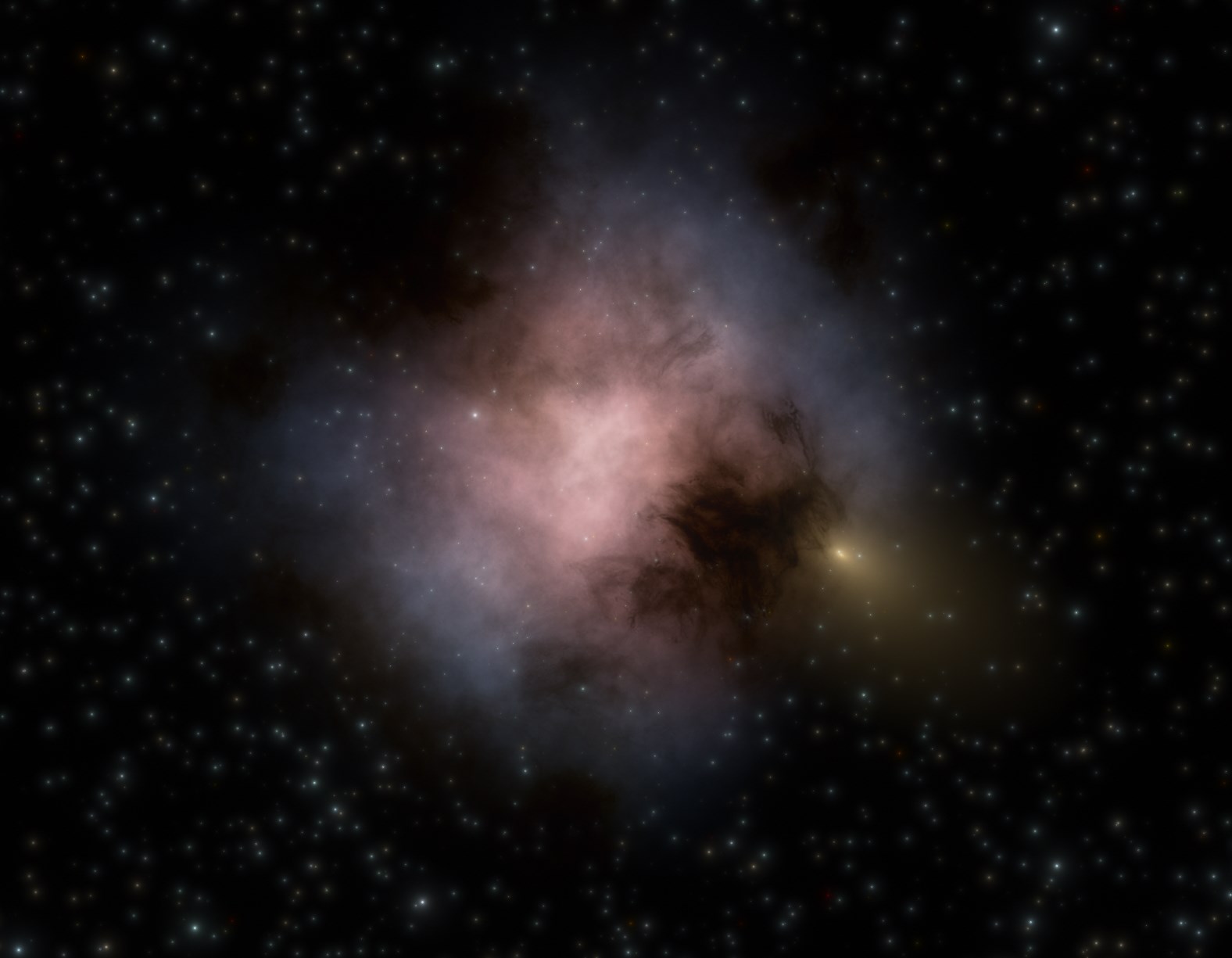NASA has shared photos of a pair of galaxies millions of light-years from Earth that look like a penguin and its egg. The image was captured by the Hubble and Spitzer spacecraft duo. The image shows the Arp 142 object, which has an amazing resemblance to the famous bird. These two galaxies are located at a distance of 23 million light-years from Earth, which is 10 times farther from us than the Andromeda galaxy.

NASA explains that the “penguin” part of the pair is a spiral galaxy, twisted and elongated by the gravitational force of its neighbor. The “egg”, on the contrary, seems faceless due to the uniform distribution of old stars. This hides any distorted shape caused by the neighbor.
The Aerospace Administration notes that, over time, gravity will bring these two galaxies closer together until they merge into one. This type of merger probably occurred in the history of most of the large galaxies that we see today, including our Milky Way.

The “penguin” is officially known as NGC 2936. Its newly formed stars are visible as bluish filaments, recorded by the Hubble telescope. The gas mixed with dust is noticeable in the form of red filaments, which are detected using longer wavelengths of infrared light by the Spitzer telescope.
The cataloged name of the “eggs” is NGC 2937. In the image, it is significantly smaller than NGC 2936. The green glow indicates that this is a cluster of much older stars. The fact that Spitzer has not detected red dust indicates that it has long lost the reserves of matter from which new stars are born.

“Combining light from across the visible and infrared spectrums helps astronomers piece together the complex story of the life cycles of galaxies,” says NASA’s Jet Propulsion Laboratory.
The much newer James Webb Space Telescope has not yet captured these galaxies. But if and when this happens, we will be able to see it with even greater clarity and detail.
According to NASA
Follow us on Twitter to get the most interesting space news in time
https://twitter.com/ust_magazine


